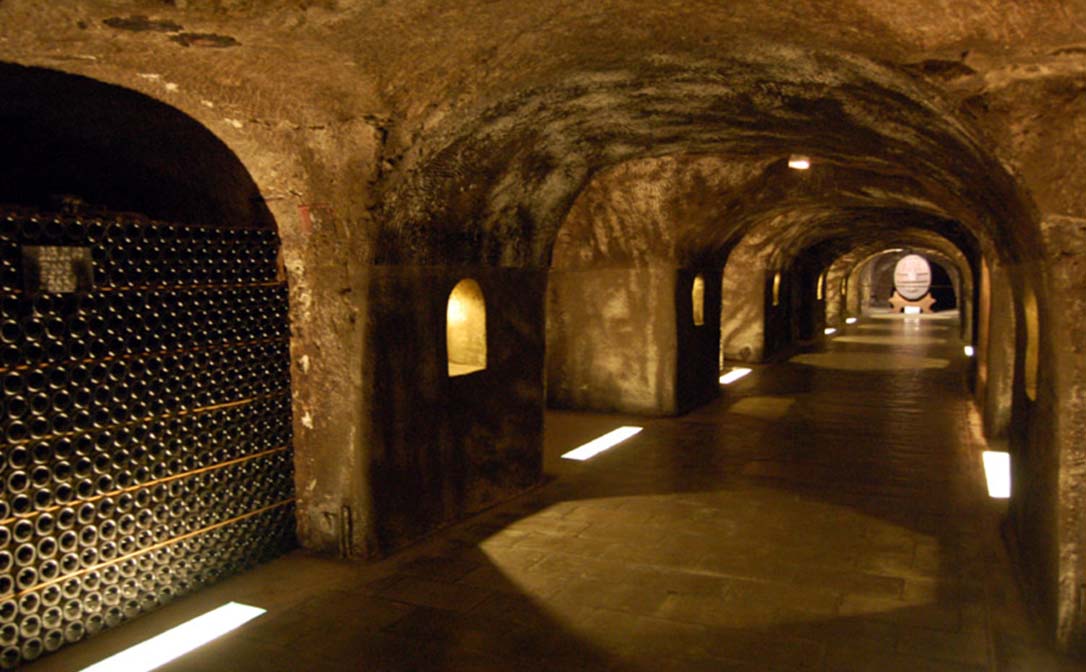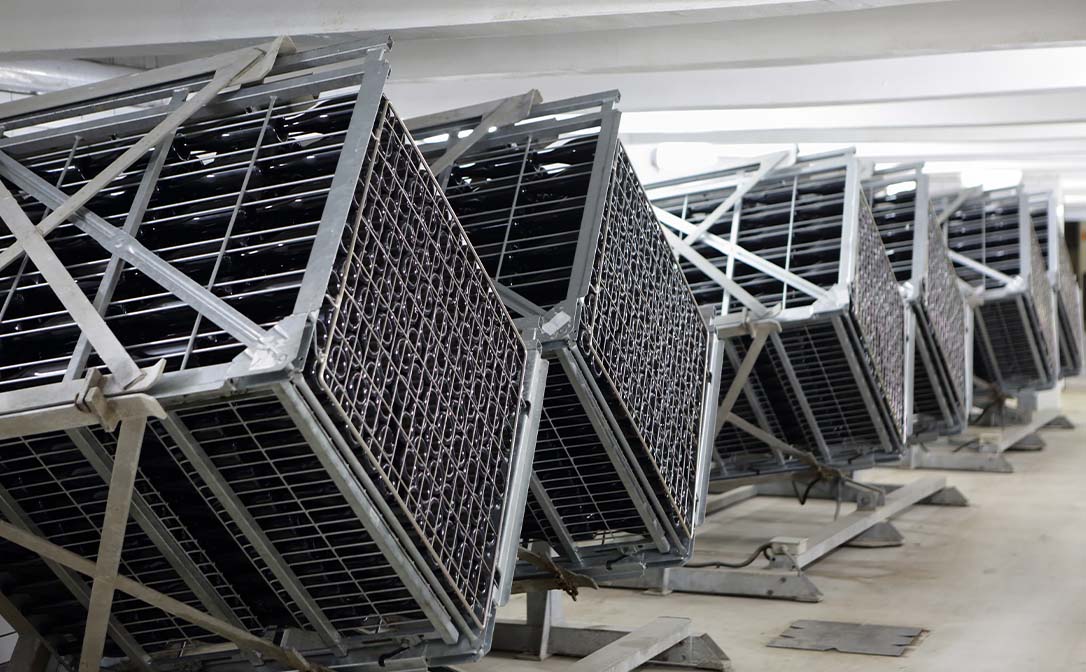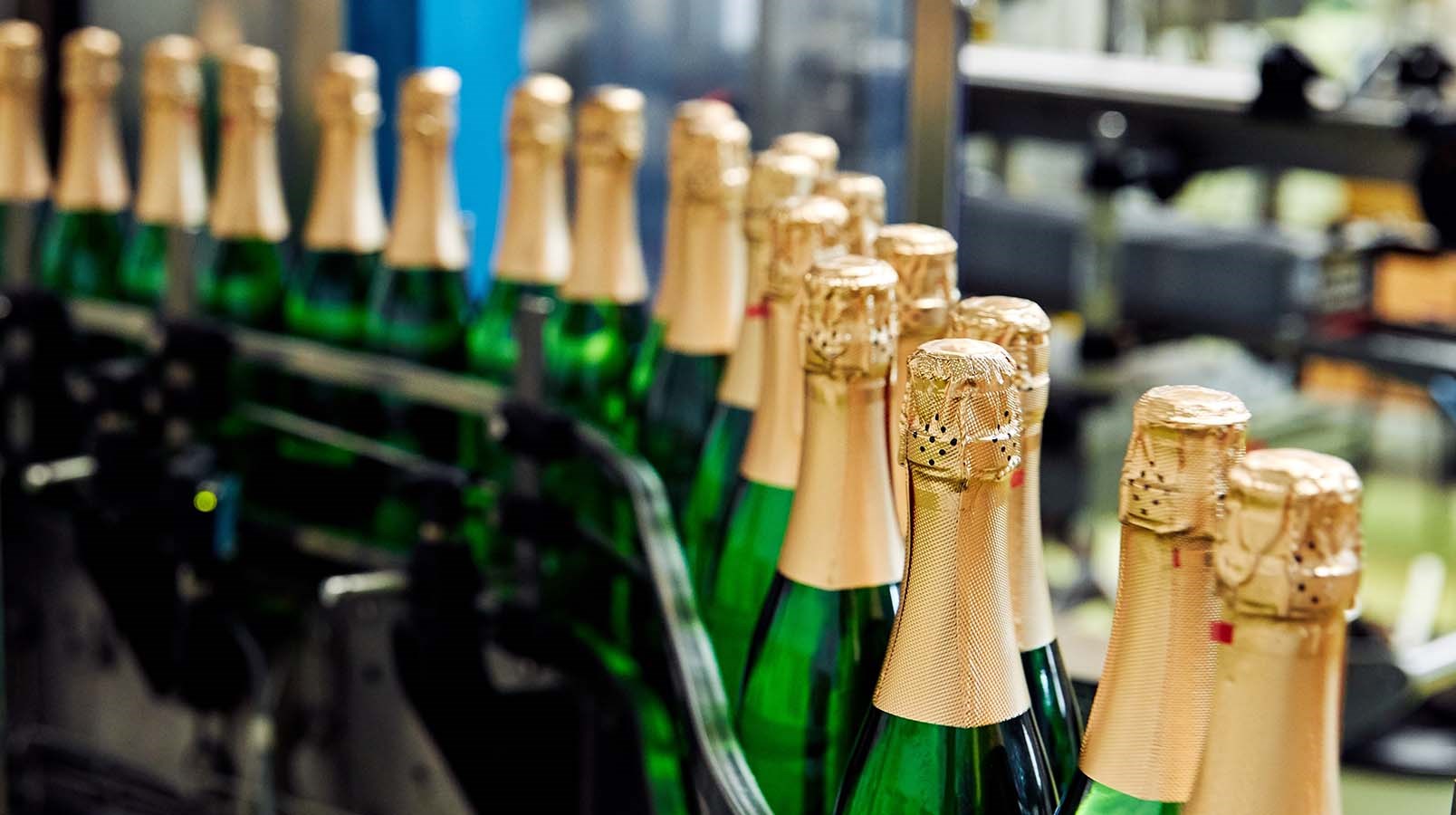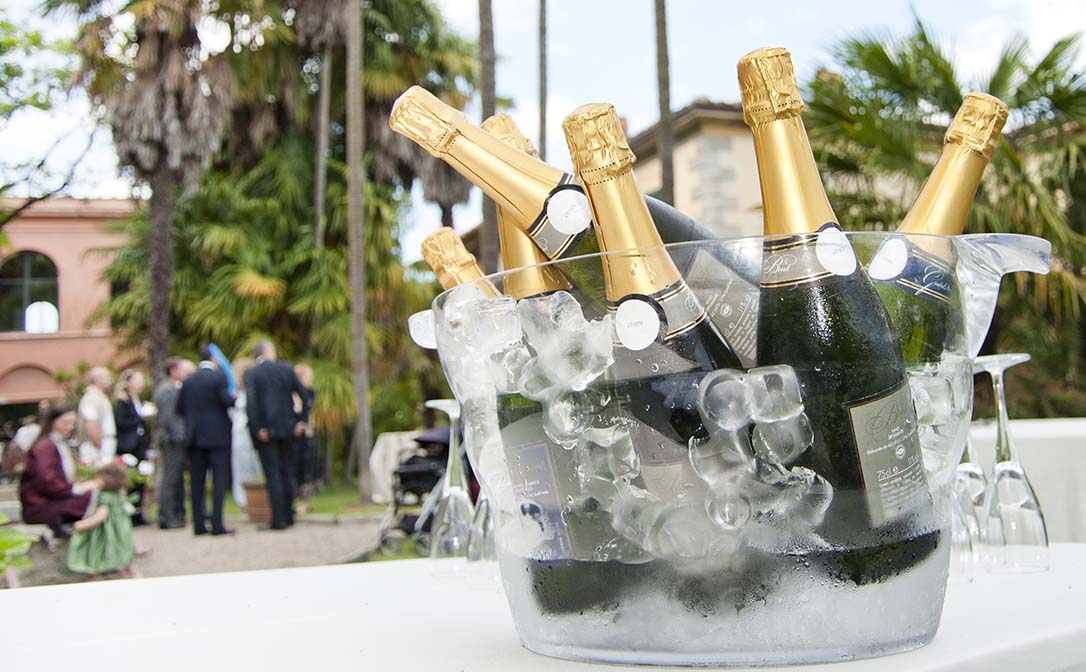Sparkling wines are enjoyed all around the world - the sound of a popping cork is a well-known signal that there’s something to celebrate. The most famous sparkling wine is of course Champagne, but there are many others that are made in the same way using a process known as the ‘traditional method’.
This process starts with a dry base wine with no bubbles. Typically, this is a mixture of several different wines blended to create the perfect balance of flavour and refreshing acidity.
To make the wine bubbly, this base wine is put into bottles along with a small amount of yeast and sugar. The bottle is tightly sealed with a cap and stacked in a cool cellar. Within the bottle, the yeast ferments the sugar, and in doing so creates a little more alcohol and, crucially, some carbon dioxide gas (CO2).
As the bottle is sealed tight, there’s nowhere for the CO2 to go. It dissolves within the wine, forming bubbles and resulting in that famous sparkle. You’ll notice that Champagne bottles are incredibly thick and strong - the glass needs to withstand the very high pressure that builds up due to the dissolved CO2.
Curious about discovering more about sparkling wine production? Then our Level 2 Award in Wines is perfect for you. Hit the link here to find out more.
 Sparkling wines are often aged in cave-like cellars for optimal storage conditions
Sparkling wines are often aged in cave-like cellars for optimal storage conditions
Traditional method sparkling wines are left to rest for at least nine months. During this time, the yeast that was placed in the bottle imparts wonderful flavours of pastry and biscuit. The longer that the wine rests in contact with the yeast, the more exaggerated these flavours become. This ageing process is a crucial step in how champagne is made, with Champagne and Cava houses maintaining vast cellars made especially for the purpose.
At some point before the wine is sold, the yeast needs to be removed from the bottle. This process, sometimes known as disgorging, is rather clever.
The bottles are gradually turned from horizontal to vertical, either by hand or by machine, so that the yeast slides gently into the neck, this part is called riddling.
 Riddling can take place manually or by using machines called 'gyropalettes'
Riddling can take place manually or by using machines called 'gyropalettes'
The neck is frozen to form an ice plug, encasing the yeast. When the cap is removed, the pressure of the CO2 expels the plug from the bottle, leaving the wine clear and bright.
Though most sparkling wines taste dry, some have a touch of sweetness. The gap left in the bottle will be topped up with a little wine which may also contain some sugar. The more sugar added at this point, the sweeter the wine will be.
Finally, the bottle is re-sealed with a thick cork and a wire cage for extra security. The next time this bottle is opened, you know someone’s about to toast to something very special. Cheers!
Keen to take your wine knowledge and tasting skills to the next level? With the WSET Level 3 Award in Wines, you’ll gain a detailed understanding of grape-growing and winemaking, learn to assess wines accurately and use your understanding to confidently explain wine style and quality.
Related content:



